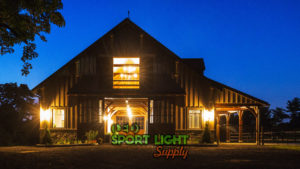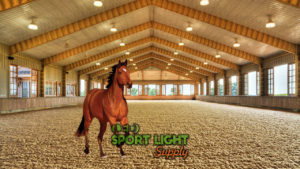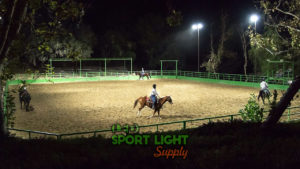Life for horses that live within stables is going to experience different seasonal changes. One aspect that will adversely affect a horse’s health inside the stable is the lighting. However, other aspects will be directly linked to health issues including breeding, reproduction, and even seasonal coats. Let’s take a closer look at why special stall lighting can improve your horse’s overall health.
Effect of lighting on horse health
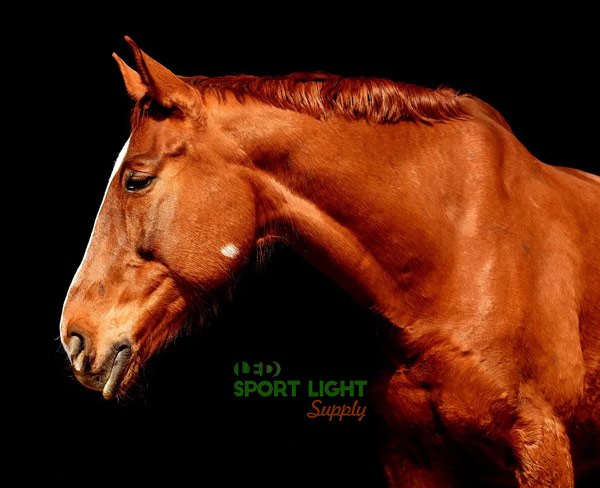 Horses are used to getting plenty of daylight to maintain their health, but that’s only half of the story. When they go back to the stable or horse arena, artificial lighting takes over. Aside from incandescent lighting, horses respond poorly to this artificial light. Yet in recent years the technology of LED lighting has enabled lighting equipment that emits specific Kelvin wavelengths.
Horses are used to getting plenty of daylight to maintain their health, but that’s only half of the story. When they go back to the stable or horse arena, artificial lighting takes over. Aside from incandescent lighting, horses respond poorly to this artificial light. Yet in recent years the technology of LED lighting has enabled lighting equipment that emits specific Kelvin wavelengths.
Among these Kelvin requirements, different light levels are used to keep the regular health of horses in check.
1. Sleep
Horses do better at sleeping in total darkness but this isn’t good for other returning horses. For this reason, the best light that helps the trainer see the stable or barn is a red light. With this light spectrum, a trainer can navigate their way into the stable. Red light not only helps facilitate recovery after training but is also good for their sleep. This light helps encourages them to sleep. This light is essential for a generous production of melatonin which is good for hair growth.
2. Internal clock
Horses that are living in stables will have stress issues if the transition of lighting is too rapid. LED lighting for horses can be programmed to make the dusk and dawn transitions easier on the horses. This is also another great transitional method for the end of the day so horses can slowly wind down. The LED horse light slowly changes in intensity to a red nighttime sleep mode.
3. Hormonal changes
Equine horses that are going through training will encounter all kinds of hormonal changes. This is why a featured point of this training using horse lights to regulate daylight hours. This light has higher levels of blue-enriched light that help horses make their hormone changes flow more naturally. At night, red lights also aid with calming effects and behavioral issues.
Lighting prevents a horse from growing a winter coat
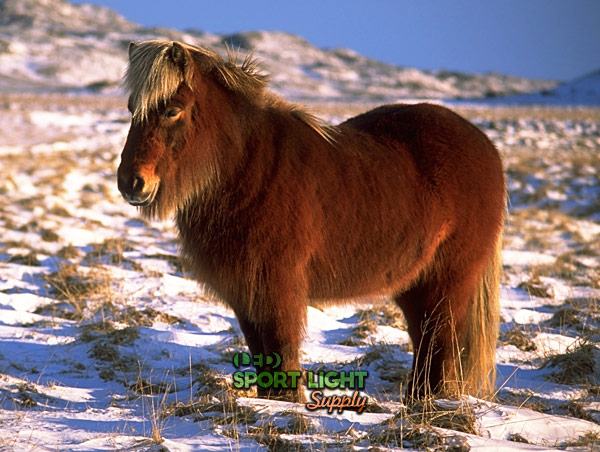 Normal hair growth for horses is stimulated by the amounts of daylight they receive throughout the year. However, in the winter this is harder to control as daylight is less abundant than in the summer and fall. Using blue light within the stables during the hours where daylight is lessened helps to promote good health and eating habits. While at night, red light helps with the stimulation of serotonin.
Normal hair growth for horses is stimulated by the amounts of daylight they receive throughout the year. However, in the winter this is harder to control as daylight is less abundant than in the summer and fall. Using blue light within the stables during the hours where daylight is lessened helps to promote good health and eating habits. While at night, red light helps with the stimulation of serotonin.
It’s not until the late fall that a horse naturally begins to grow their winter coat. This is where the indoor stable lights can trick a horse into thinking it’s still spring and summer. This in turn will keep the horse’s hair from growing. A horse will need blanketing when they go outside because of the lack of a winter coat. But for maintaining the short hair that’s desirable for year-round touring, longer hours of daytime horse lighting is required.
As long as your horse has at least 8 hours of sleep needed for the night, this is an added bonus for equestrian owners. The excess hair will be stunted and normal hair growth will continue as usual. In warmer climates, this is typically not needed, but for owners who live in regions that have cold winter months, this is a must.
The effects of lighting on horse reproduction
One of the disadvantages of natural lighting throughout the year is the effect it has on horse breeding. For horses in captivity and especially to produce equestrian champions takes preplanning. There is a growing tendency to breed mares earlier in the year. Since this is a darker time of the year, this goes against the natural mating habits of a mare.
This is where long daylight therapy is required beforehand using LED horse lights. These help stallions and mares reach peak hormone levels so they will be ready before springtime. What prolonged daylight therapy does after breeding is successful helps develop healthier foals. Mares that are being bred will have further advantages for producing milk and colostrum.
As mares have given birth, the recovery process of post-foaling is faster so the mare will be ready to breed again. Using a scheduled 90-day long daylight therapy for pregnant mares ensures the mare will have the optimum health outcome. Using regular light from incandescent lamps will not be as successful. There will be lower chances of success and stallions may have lower libido and sperm concentration.
This is why controlled LED horse lights are better for reproduction since their breeding habits will be at peak levels.
Artificial lights Vs natural daylight effect on horses
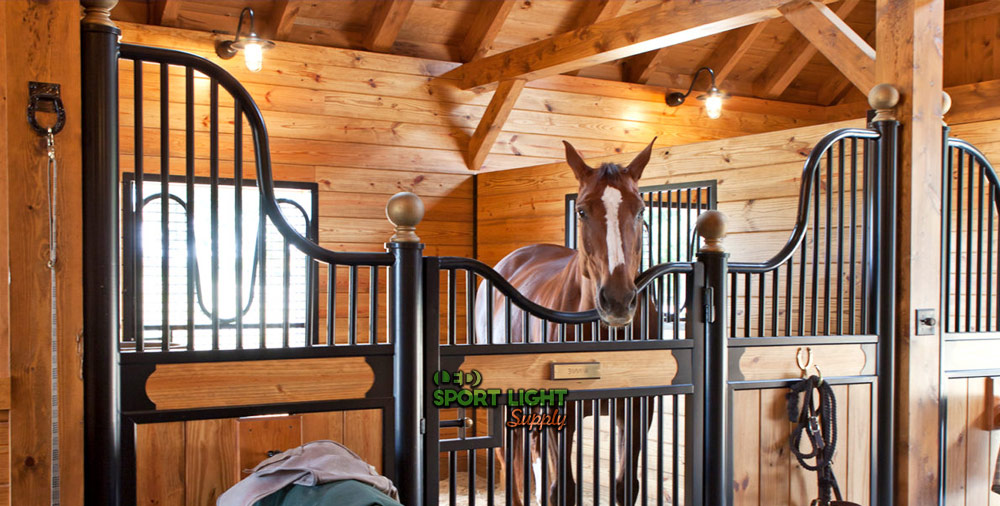
Artificial lights don’t have the correct amount of natural UV light that you experience with daylight. These include incandescent lights, halogen lights, or anything that is using a bulb that burns. The effect that artificial light has on a horse can result in additional hormone treatment from a veterinarian. This has been a long-term tradition that is haphazard and not so healthy for mares.
The addition of hormone treatment is not as natural as long daylight therapy using LED horse lights. This isn’t to say that artificial light doesn’t work but the overall health of horses inside stables is decreased. Normally, daylight provides horses with good health however artificial light carries a slew of issues. This can include eating problems, behavioral issues, and impaired circadian rhythms.
The addition of LED lighting for horses improves stable lighting and provides equestrian owners with optimal conditions. And this is especially if these horses are meant for horse arena competition and breeding. LED horse lights offer these benefits that can be taken along with owners anywhere they travel. This way the level of light they receive is better controlled instead of using artificial lights.
Horse lighting Q & A
1. Do horses need light at night?
This is a question that is not always easy to answer as it may pertain to the conditions that stables are lit for. Most horses require total darkness to fall asleep, while others are perfectly fine with some degree of light still present. Inside a stable, it’s common that equestrian horses are all kept in their stalls separate from each other. The light itself must be dim enough so that the element of darkness is obvious.
This still makes it hard for equine horse owners to return horses to their stalls without waking other horses that are sleeping. For this reason alone, many owners are using special lights that make it easier to see in the dark using colored lights. The preferred color that works best is red colors. This enables a horse to sleep under this spectrum of light without being disturbed. It also makes sense that owners can see inside the stable clear enough to move around.
If a horse is being returned to its stable, the other horses aren’t disturbed and will be able to sleep. Certain light spectrums such as red are nearly the same as darkness for a horse since they cannot perceive this color so easily. It also aids as a calming effect that helps horses fall to sleep faster.
2. Should we keep horses under lights?
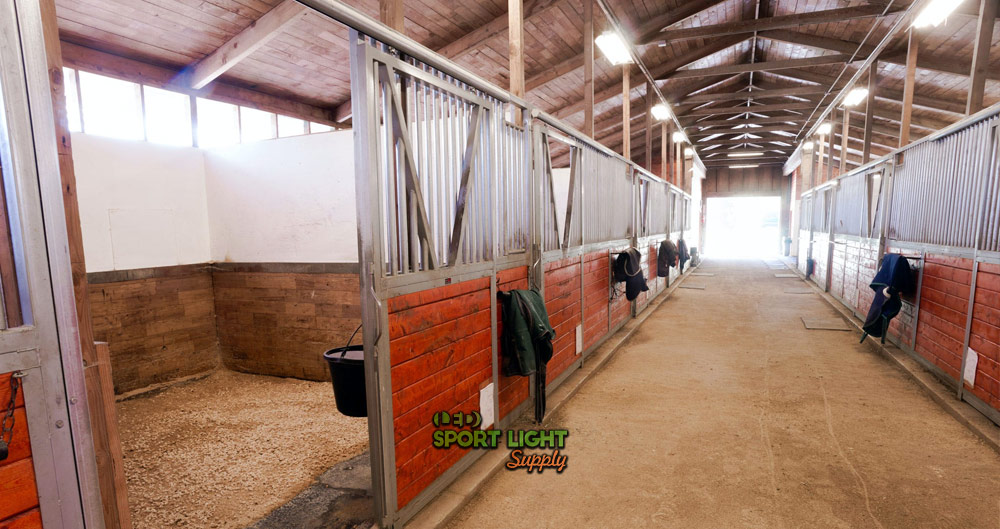
Depending on what your horses are intended for, stable lights are essential for good health. They are also important for maintaining natural daylight control triggers, so their internal biology follows a preset clock. Many equestrian horse owners have a schedule that horses follow to regulate breeding periods. This isn’t limited to only breeding since issues such as winter coat growth may be stunted.
A horse that receives healthy doses of light that allows daylight spectrums similar to spring and summer is important. The horse will instinctively believe the seasons aren’t changing and will not produce a winter coat. This keeps their hair short during winter periods and doesn’t affect their performance otherwise. Essentially, stable lights provide an artificial outdoor lighting schedule that helps maintain a strict cycle.
This aids in conditioning equestrian horses for their overall health, stability, recovery from injury, and often behavior therapy. Older lighting that uses incandescent bulbs has been known to work fine, but recent LED light discoveries are proving higher results. LED lights help mimic the light spectrum that is natural for simulating real sunlight. Serious owners are now finding that lighting upgrades are essential for a professional competition.
3. Can a horse sleep with the lights on?
It depends on the amount of light that’s inside a barn or stable. It’s not recommended that horses are meant to sleep in a stable that has light levels too high for sleeping. They have an internal sense of knowing when to be awake and when to be asleep. If light levels aren’t low enough for them to fall asleep, chances are they won’t go to sleep. This is bad for their health and this is why lights need to be dim.
Some owners may use a low wattage bulb or have a dimmer installed to make lighting conditions ideal for sleeping. The best would be total darkness but this can be problematic for an owner entering a stable. Dim lights or lights that are strategically placed where horses cannot see them are an improvement. Professionals who are relying on LED lights will opt to use red lights so horses will fall asleep naturally.
The extra bonus with red light is being able to see inside a stable area without much trouble. As long as there is adequate silence, horses can continue to sleep until daylight levels are brought back.
4. Can a horse see in the dark?
A horse has very good eyesight that allows them to see very well at night, but not any better than human eyesight. In some conditions, a horse can see in darker conditions than people can since their eyes are larger. So, of course, the ability to see is going to depend on the amount of light that is available to them. Under a full moon, a horse can see just as well as you would expect in the daytime.
Some minor flaws make it more difficult for a horse to distinguish objects in the dark. It can be dangerous for a horse walking in total darkness to navigate a path that has uneven terrain. This effect is increased dramatically if a horse is returned to a stable or barn that is also totally dark. On the flip side, going from daylight conditions of a horse arena to total darkness is harder for horses.
The adjustment will take longer to adjust due to the difference in these brightness levels. But an equine horse that returns to the same dark stable during nighttime conditions will be able to see just fine. With that being said, a horse can see in the dark to a limited degree if the conditions are favorable to them.
5. Do horses sleep at night?
Horses can sleep up to 3-4 hours at night. They aren’t the type of animal that needs extended hours of sleep. Some horses can even sleep standing up instead of lying down. Horses can also sleep with their eyes open which for some people seems a bit strange. Equestrian horse owners will know when their horses are asleep and when they’re awake. It’s all depends on the movement that can be seen.
As horses sleep standing up, their muscles and leg bones lock into place allowing the ‘stay apparatus’ effect to occur. A horse only needs as much sleep as they require depending on exercise regimes and sleep schedules. Horses can go without sleep for days if they are experiencing sleep deprivation. This can be a sign of mental health issues or something that is bothering a horse. Sooner or later a horse will decide to go to sleep as they wish.


